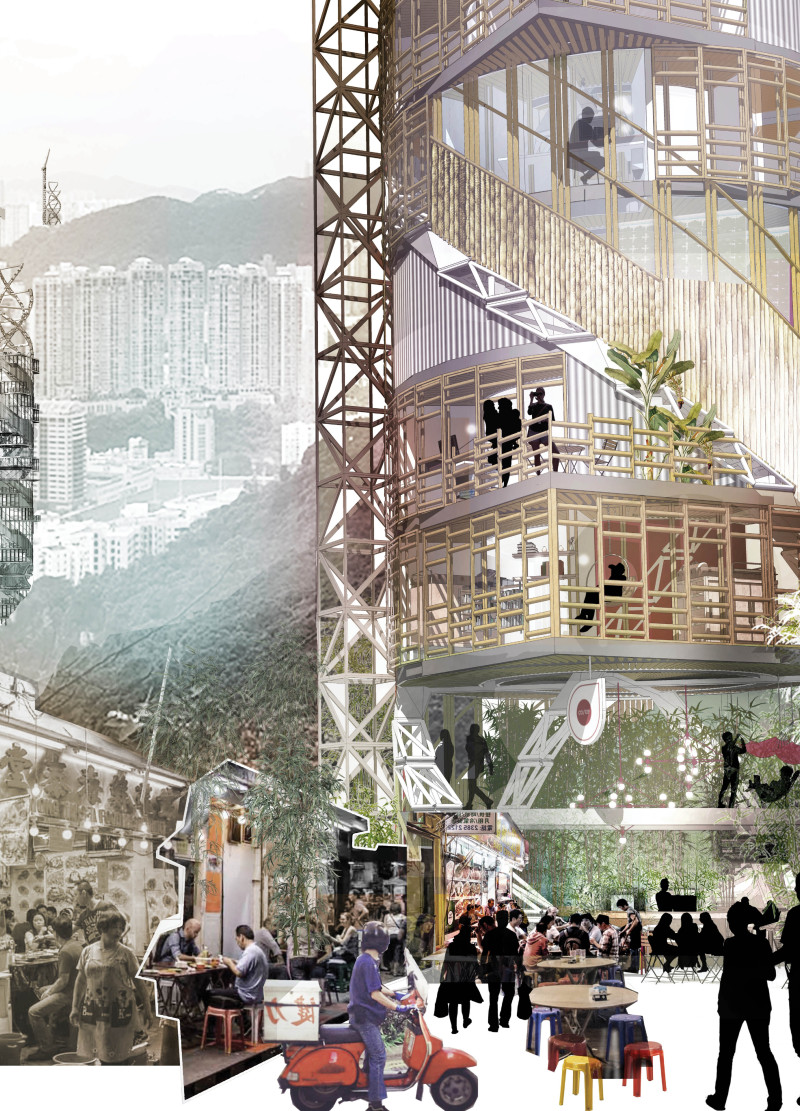5 key facts about this project
CO/OPPORTUNITY is a not-for-profit housing initiative aimed at addressing the ongoing issue of housing affordability in Hong Kong. The design focuses on the Helix Tower, a structure that seeks to redefine traditional housing models by promoting community involvement through a limited equity co-operative model. Located within the urban fabric, the project takes advantage of underutilized spaces, offering a fresh approach to residential living in a crowded city.
Modularity and Adaptability
The design prioritizes modularity as a key concept. The Helix Tower has a compact footprint, which allows for an efficient arrangement of living spaces. This modular design maximizes land use and provides flexibility, enabling the tower to evolve as the community's needs change over time. The stacking of units allows for a dynamic living environment that can grow with its residents.
Financial and Community Engagement
CO/OPPORTUNITY introduces an innovative funding model, enabling community members to contribute through technology-driven crowd-sourced capital. This method removes intermediaries, allowing residents to invest using a mix of cash and sweat equity. By participating in the development process, residents gain a sense of ownership, which strengthens their connection to the community and fosters a shared responsibility for their living environment.
Intensive Space Usage
The design incorporates the concept of intensive space usage, allowing for a blend of residential and communal areas. Each floor is designed with multifunctional spaces that adapt throughout the day. Communal living rooms can serve as productive work zones during the day, promoting interaction among residents. This adaptability not only enhances social engagement but also optimizes the use of available space.
Sustainability and Cost Efficiency
While specific materials are not detailed, the focus on sustainability and cost efficiency is evident. CO/OPPORTUNITY aims to lower construction costs by utilizing local labor and sustainable practices. This approach ensures that the housing remains affordable while supporting the broader goal of environmental sustainability in the urban landscape. By structuring the project this way, it serves as a feasible model for future housing developments.
The design of the Helix Tower encourages a mix of private and shared spaces, creating an environment that nurtures relationships and community involvement. This blending of functions stands as a testament to a new way of thinking about urban living.


























